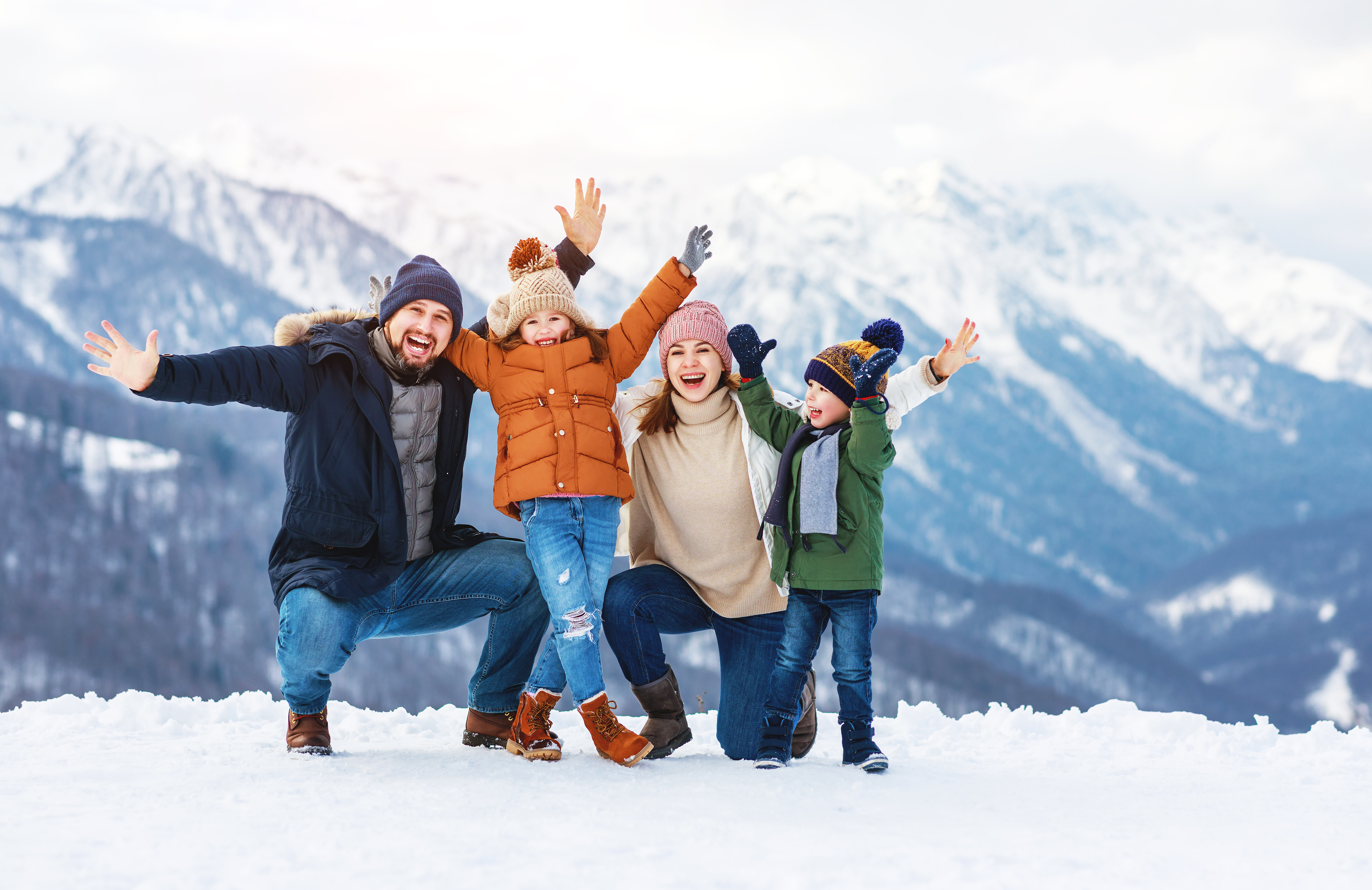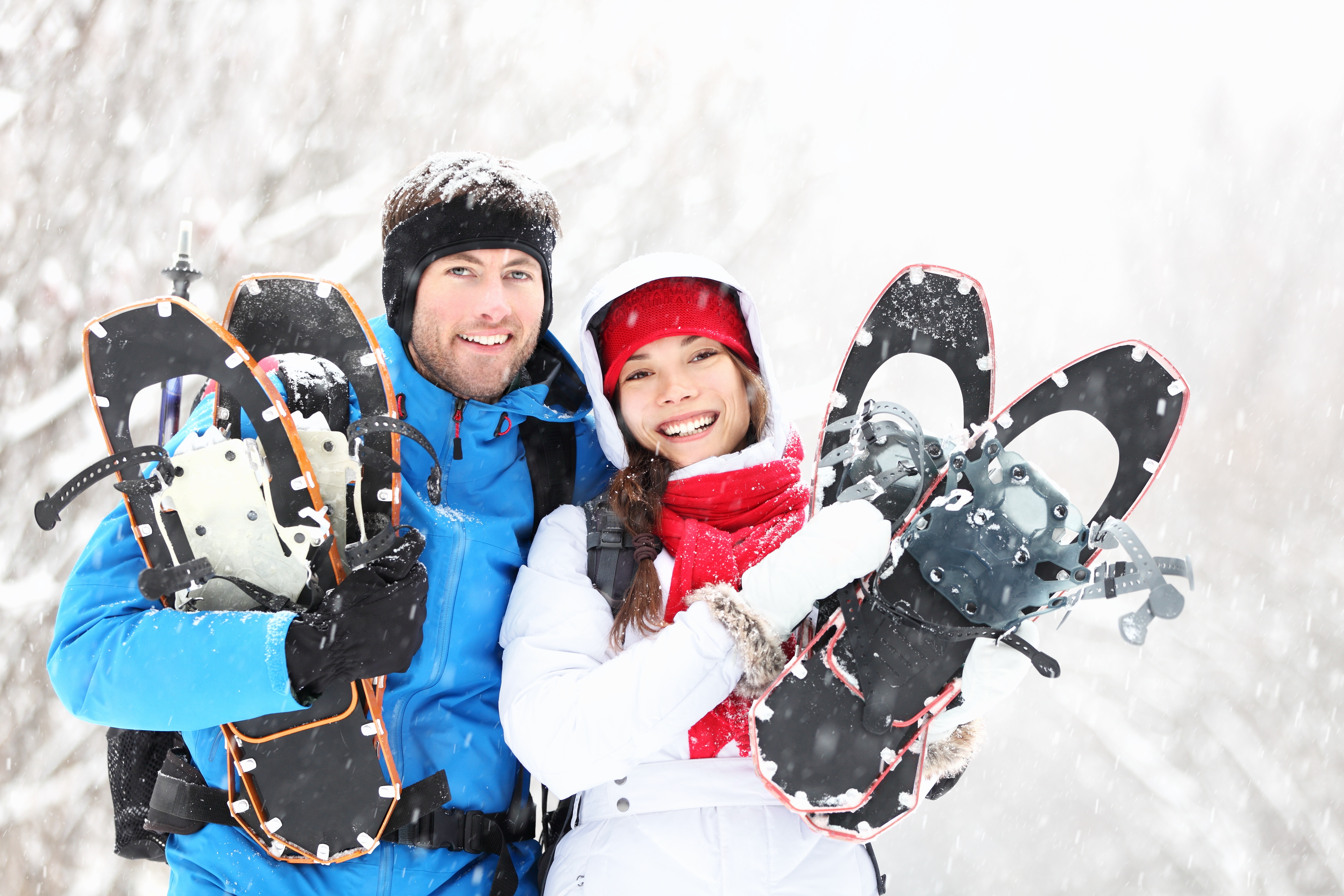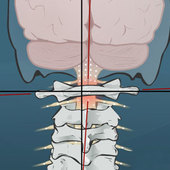For many people, summer inspires spending time outside. The days are longer, the sun seems brighter, and it is easy to plan activities such as hiking, boating, biking and barbequing. Spending time outdoors has several health benefits, but according to a 2018 survey, the average Canadian spends less than an hour outside on weekdays, and between only one to two hours on the weekends.
Now that we are in the midst of winter, the threat of inactivity and being stuck indoors is much greater than during the summer months. We will explore why spending time outside is so important and offer some suggestions to optimize your outdoor time, even when the mercury drops!

Benefits of being outside include:
- Boosts your energy
Several studies suggest that spending time outside can significantly boost your energy and may be more advantageous than an extra cup of coffee to get you through the afternoon! Sunlight is known to boost serotonin levels; serotonin is a hormone that stabilizes our mood, happiness, and feelings of well-being.
- Aids in Healing
A study from 2005 reported that spinal surgery patients experienced less pain and stress and took fewer pain medications during their recovery if they were exposed to natural light. One study even demonstrated that patients with a “green view” had shorter postoperative stays, used fewer painkillers, and had fewer postsurgical complications compared to patients whose view was an urban landscape such as a neighboring building.
- Boosts your immune system
It is believed that phytoncides increase the number and activity of white blood cells, which are important for strengthening the immune system and fighting off infections. Phytoncides are antimicrobial chemicals emitted by plants and trees to protect themselves from certain insects. There are several studies that are demonstrating that spending time in nature decreases mood test scores for anxiety, depression, confusion, fatigue, and anger. Stress also inhibits the immune system, so decreasing the stress response is also beneficial for the immune system.
Make the most out of winter activities:
Part of the challenge of living in a climate such as ours is that there are between 4-6 months that are cold and snowy. The days are very short, and it can be difficult to motivate yourself to get outdoors. It is important to create a strategy to maximize outside time, so here are some suggestions to help you make the most of open-air activities this winter.
- Start with appropriate clothing
You will be more inspired to spend time outside (even when it is well-below freezing!) if you have good, comfortable, insulating outdoor clothing. Preparing yourself with warm base layers is key; materials such as merino wool or silk are ideal as they insulate but also keep your skin dry. Fleece and flannel are great mid-layering materials to keep you cozy but won’t make you overheat. Winter jackets will vary depending on what type of activity you want to engage in, but down-filled jackets (such as Canada Goose jackets) are ideal for staying warm and dry. Speaking to clerks at any outdoor store such as MEC, Atmosphere, or Camper’s Village is a great starting point if you are new to colder weather. Boots and socks also make a big difference ; waterproof, insulated boots with rubber soles for traction will provide comfort as well as safety. ‘Crampons’ are a staple item for walking as well, even in the city, as they will significantly lessen your worry about slipping and falling on the ice.
Did you know that you lose almost 30% of your body heat through your head? Toques are a must-have, or at the bare minimum a headband as it is easy for thin areas such as ears to get frostbite. A neck buff or scarf will help keep the chill off the neck and can double as a face covering if it gets too windy. Lastly, mittens or gloves are extremely important; it’s easy to carry a small pair of layering gloves (you can even find cheap pairs at the Dollar Store) in your jacket pocket to have on hand just in case, in addition to a warmer and potentially waterproof outer mitt or glove to keep your hands warm and dry during more intense winter activity.
- Try a new activity
 One advantage we have in Calgary is our proximity to parks and mountains. If you are not used to more intense outdoor sports such as skiing or snowboarding, snowshoeing is a great option as well as winter hiking with crampons. Modern snowshoes are not challenging to use and are easily rented at many facilities in town. Cross country skiing is also a great outdoor activity, and many city golf courses groom tracks for easy access to skiing right here in the city!
One advantage we have in Calgary is our proximity to parks and mountains. If you are not used to more intense outdoor sports such as skiing or snowboarding, snowshoeing is a great option as well as winter hiking with crampons. Modern snowshoes are not challenging to use and are easily rented at many facilities in town. Cross country skiing is also a great outdoor activity, and many city golf courses groom tracks for easy access to skiing right here in the city!
Other activities that do not require a lot of equipment and can bring out your inner child include:
- building a snowman
- building a snow fort or a quinzee (here’s a great link for instructions)
- building a snow maze
- sledding and tobogganing (many cities have designated sledding hills)
- spray paint snow with food colouring and water mixed in a spray bottle to decorate the yard
- make snow castles using cake pans and muffin tins
- Commit to 15 minutes daily
No matter the weather, commit to taking a 15-minute walk outside every day. Make sure you are well dressed, perhaps prepare a coffee, tea, or hot chocolate to help keep you warm, and explore your neighbourhood or a nearby park. Having an accountability partner is motivating and will help you (and them!) keep the commitment. Don’t take the same route every time; instead, consider exploring new communities or parks so you don’t get bored.
- Have a winter campfire
There is nothing cozier than enjoying the flickering of flames while wrapped in a blanket under the stars. We often think of campfires as a summer activity, but there is no reason you can’t have a cozy fire in the middle of winter! Smores are just as tasty in February, and with a hot chocolate or tea it’s a great way to enjoy some outdoor time with friends or family. You don’t even have to wait until for the sun to go down, you can also plan a daytime weenie roast for a lunchtime picnic!
This is just a handful of ideas to help get you started so that you can enjoy the great outdoors all year long. Get creative and remember to dress appropriately for the temperature and your activity. Habits generally take 21 repetitions to form, so start off the New Year by doing one small activity outside every day!
For even more information about the health benefits of the outdoors, as well as information about forest bathing, click here.

Dr. Mylène Hopf
NUCCA Chiropractic
The Vital Posture™ Clinic
Calgary, Canada



